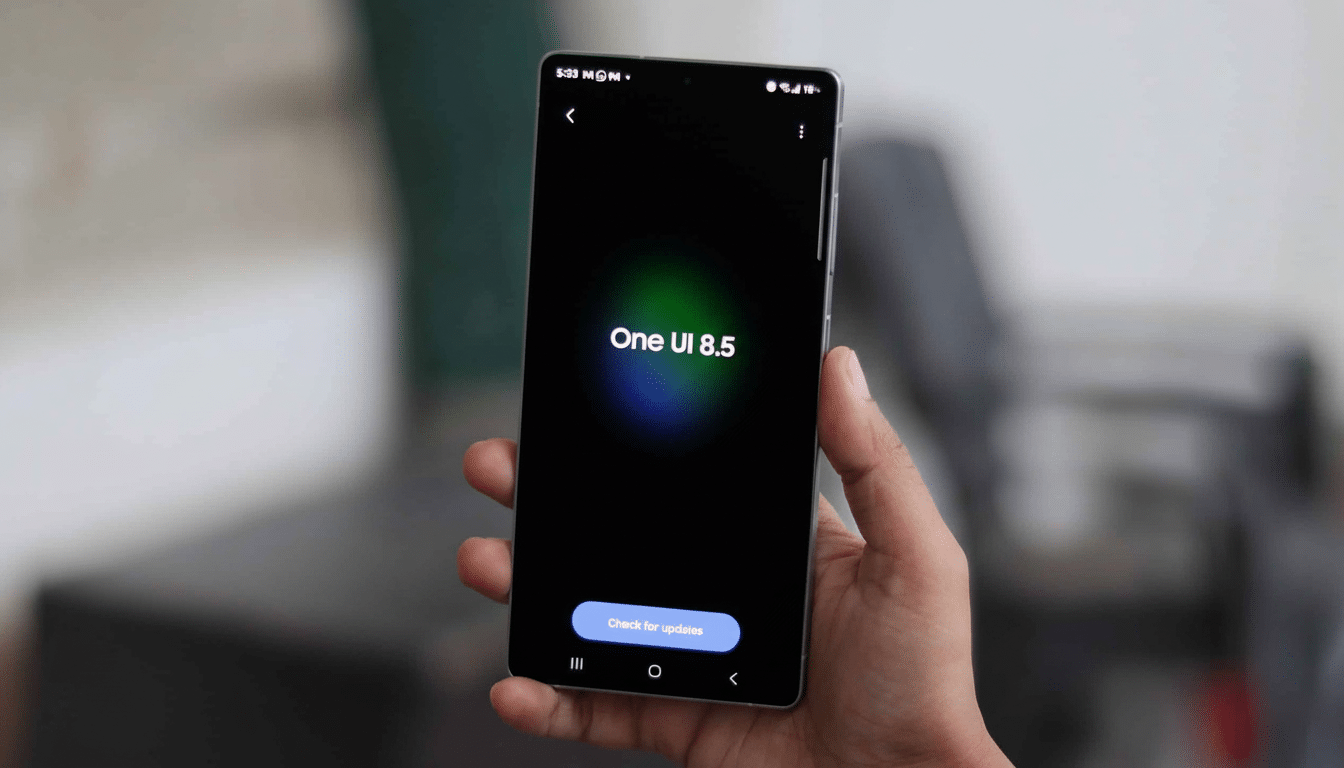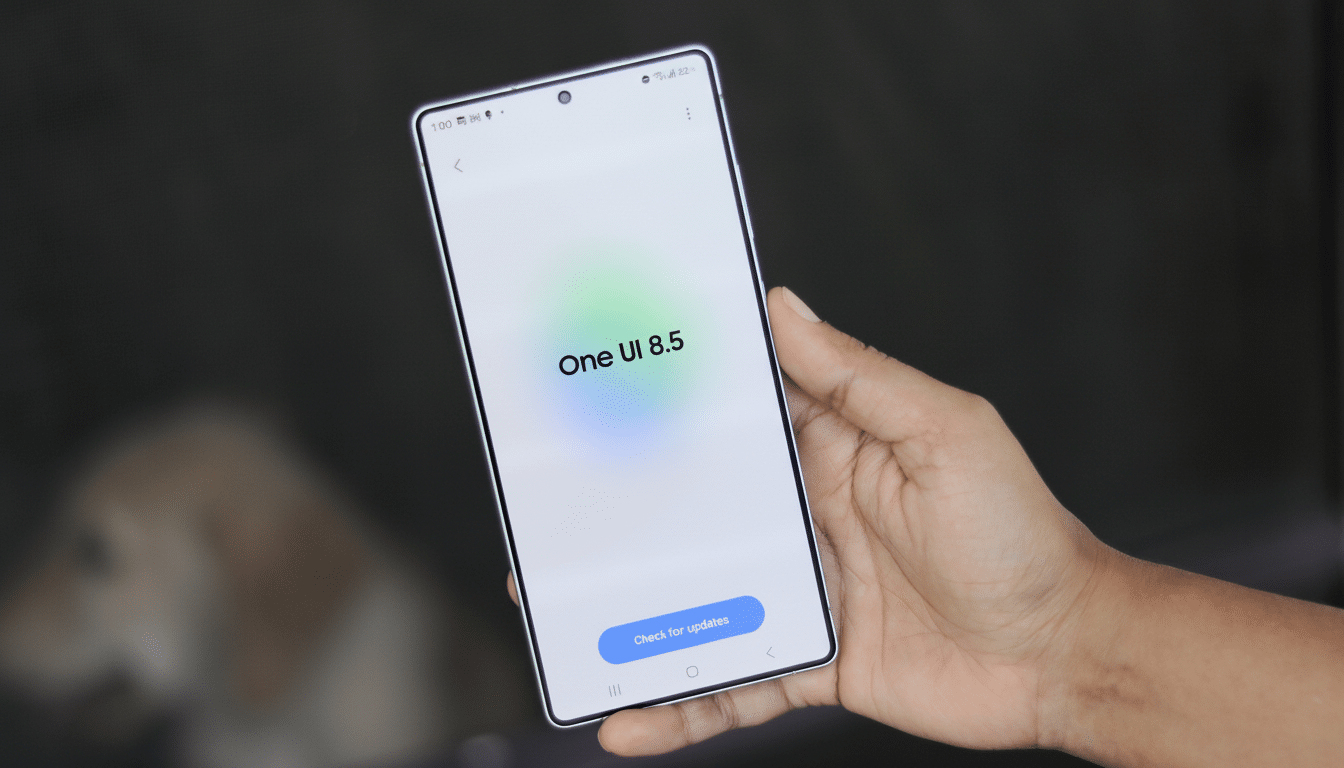Samsung is developing a feature that will slow your data connection on purpose when you aren’t using your phone to maintain battery life, sacrificing some speed. Code references in One UI 8.5 early builds suggest a “Network Battery Saver” that reduces network access when your device is less active, such as while you’re sleeping.
New Network Saver Toggle Spotted in One UI 8.5 Builds
Leaked system strings in test firmware suggest Samsung is working on a Network Battery Saver that “restricts network performance when the device is unused” and “may limit the maximum data transfer rate and block incoming calls when your phone screen is off.” The description also says the feature will use Samsung’s in-house context engine, Personal Data Intelligence, to determine when and how those limits are applied. Android leaker Mishaal Rahman has pointed to these hints, and they play into suspicions that One UI 8.5 will run on an Android 16 quarterly platform release.
- New Network Saver Toggle Spotted in One UI 8.5 Builds
- Why Slower Data and Fewer Wake-Ups Can Save Battery
- Context Awareness With Personal Data Intelligence
- What the Network Battery Saver Limits Could Look Like
- Controls, Transparency and Exceptions for This Feature
- Potential Downsides and Caveats Galaxy Users Should Watch
- What This Could Mean for Current and Future Galaxy Owners

Why Slower Data and Fewer Wake-Ups Can Save Battery
The biggest power users in a phone when they’re active are the cellular modem and Wi‑Fi radios. Industry analyses from companies that make chips and independent labs have repeatedly shown that sustained data transfer and frequent network wake-ups can be competitive with the display in terms of energy consumption, especially under poor-signal conditions. Cut down on wake-ups, defer background transfers, and lengthen idle periods, and that battery drain falls off a cliff.
In practice, reducing throughput or making background syncs less frequent can help keep the modem in lower power modes for a longer time. That’s why features such as Android’s Doze, adaptive connectivity on select devices, and iOS’s Low Data Mode frequently deliver significant standby improvements. Samsung seems to be approaching that behavior more contextually, depending on what you’re doing.
Context Awareness With Personal Data Intelligence
Samsung’s Personal Data Intelligence (also referred to as the Personal Data Engine) learns your behavior on-device to suggest things and automate minutiae. The released prompts indicate that Network Battery Saver would then prompt you to allow the system to do this so it can detect periods of predictable inactivity – such as at night, at home, or during regular quiet periods – and apply effective network limits. Samsung has referred to this intelligence in the past as being on-device, which helps to mitigate any privacy issues because raw data doesn’t have to leave the phone.
What the Network Battery Saver Limits Could Look Like
Samsung has not released a spec sheet, but the strings and similar features on other platforms suggest several possibilities:

- Capping maximum throughput
- Lengthening the interval between background network checks
- Delaying large background transfers
- Stepping down to LTE from 5G when full speed is not needed
Count on a bit more lag and slower background fetching, though – although this will most likely not affect critical system operations such as calls, messaging, alarms, and emergency services.
Google’s Pixel line already uses Adaptive Connectivity to give LTE preference over 5G when performance requirements are low, and some OEMs reduce network polling in Bedtime or Ultra Power Saving modes. Samsung’s spin is in deciding on its own when to ease off the radios, based on your habits.
Controls, Transparency and Exceptions for This Feature
The test strings suggest that you’ll need to actively opt in by enabling the Personal Data Intelligence feature, which would make sense from a transparency standpoint. A good implementation would also allow for app-level exceptions — imagine messaging, smart home controls, or cloud backup software that you’d like to run full steam ahead throughout the night. This fine-grained toggle configuration is usually Samsung’s style for Battery and Device Care, so I’d look in there for placement as well as a clear explanation of what it’s throttling when.
Potential Downsides and Caveats Galaxy Users Should Watch
There are trade-offs. Overnight game downloads, big cloud photo uploads, or streaming to a smart display might go slower or be postponed. Users who must coordinate across time zones, or depend on real-time notifications during the night, may have to whitelist critical apps. And with past industry controversies around performance management, Samsung will need to explain how exactly this feature works and make sure it doesn’t degrade interactive use without users noticing.
What This Could Mean for Current and Future Galaxy Owners
If delivered as described, Network Battery Saver could eke extra hours of standby time out of modern 5G phones with no real daily performance hit. Those benefits should be most pronounced for users living in poor-signal areas or who have a lot of background-connected apps open at once. The feature isn’t announced; schedules can change; but the code makes this pretty clear. Stay tuned for more clarity as One UI 8.5 testing rolls out and Samsung explains how its context engine governs your smartphone network when you’re off the phone — and how you can take control when it’s not.

